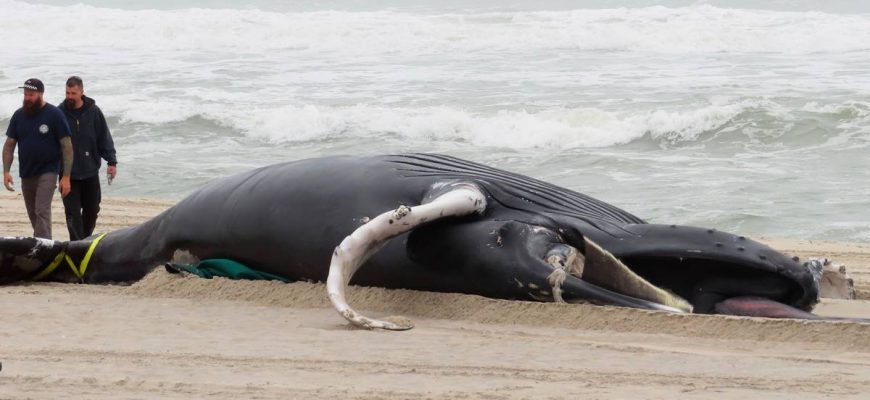The animals and plants in the sea are in danger.
Never before have such high temperatures been measured in the sea globally, and especially in the North Atlantic, as now.
This worries several marine scientists.
– We have had a major marine heat wave episode before, in the North East Pacific. It had major consequences for fish, among other things, explains senior researcher Geir Ottersen at the Institute of Marine Research to NRK.

PARTICULARLY EXPOSED: Species that cannot move are particularly exposed to temperature changes in the sea.
Photo: Sam Garrard
Warming of the ocean leads to food shortages.
– Strong heat waves can lead to mass death of fish, but also of seabirds. They simply starve to death when there is greater competition for food, says oceanographer Ola Kalén to the Swedish news agency TT.

CONCERNED: Oceanographer and climate scientist Geir Ottersen is concerned about the consequences the new acute heat waves in the sea will have on animal and plant life.
Photo: Erlend Astad Lorentzen / Institute of Marine Research
The situation is worst for species that cannot move, such as mussels, corals and sea grass.
– You have animals and plants that cannot move on short time scales. They have to find their way in what comes next. An example is the large coral reefs. Parts of the coral die when it gets warmer, says Ottersen.
– If there is less phytoplankton, there will be less food for fish. This spreads further up the food chain, says Kalén.

HOT SEA: This map of temperature deviations in the ocean compared to the average since 1982 shows that the North Atlantic in particular is hard hit in 2023. Global warming is more extreme in the northern regions.
Photo: Climate Reanalyzer, University of Maine
Too many about the leg
One consequence of climate change is that species move from warmer seas to colder seas.
– We see that many species are on the move. From the tiniest little plankton, to fish and large marine mammals, there are many who move “out from the middle” and towards the poles, the Institute of Marine Research warned already last winter.

The lysing fish species is among the species that are constantly moving north due to the warming of the sea.
Photo: NTB / NTB
A warmer sea and new competitors in the dinner plate are not good news for those who already live in the northern regions, emphasizes research leader Mette Skern Mauritzen.
She points out that species such as polar cod, polar bears and seals are dependent on ice, adapted to a life in cold, polar regions and can be vulnerable to increased competition.
It is therefore even worse news that it is also getting warmer in these regions.
“Extreme” heat wave may last until November
The world’s oceans are 1.09 degrees warmer than average. In the North Atlantic, which is the part of the Atlantic above the Equator, it is 1.3 degrees warmer.
The US ocean agency NOAA estimates that the heat wave in the North Atlantic will last until November.
– Temperature changes in the sea can last for longer periods than on land. In water it is not like in air where the weather causes rapid changes. So this increase can last for many months, explains Ottersen.
NOAA describes the heat wave as “extreme”.
Ocean and climate researcher Tore Furevik tells NRK that the heat wave is mainly due to three things:
- Man-made warming.
- The weather phenomenon El Niño.
- Abnormal ocean currents.
Off the coast of Norway, off Southern Norway and in the Oslo Fjord, the temperature has been up to 5 degrees higher than normal.
Danger to farmed salmon and the Oslo Fjord
Both the UN climate panel and an expert council appointed by the Nordic Council of Ministers have previously warned against marine heat waves.
Geir Ottersen at the Institute of Marine Research says the heat wave we are now witnessing could threaten farmed salmon.
The southernmost salmon cages in Norway, where the deviation is around 3 to 5 degrees, are approaching the tolerance limit for temperature increase.

Merder in the Romsdalsfjord between Vikebukt and Molde in Møre and Romsdal.
Photo: Paul Kleiven / NTB
– We have a large aquaculture industry. And in the southernmost areas we normally have summer temperatures that are at the limit of what the salmon can tolerate. A few years earlier there has been a lot of abnormal death due to high temperatures.
Currently, the deviation outside the Westland coast is slightly lower than in, for example, the Oslofjord, at between one and two degrees.
If the temperature also increases in Western Norway, it is critical.
– Then the industry should start thinking about what measures they can take, says Ottersen, and suggests, among other things, lowering the cages deeper below the sea surface where the temperature is lower.

HARD PRESSURE: A red shark swims at the bottom of the Oslofjord, an already hard-pressed ecosystem.
Photo: K. Palmquist
But Ottersen fears the consequences in the already hard-pressed ecosystem in the Oslo Fjord.
– The unfortunate thing about the Oslofjord is that there are already a number of stress factors. Increased temperature at the top can cause major problems for some species. Inward from Drøbak, there is a very closed pool with a lot of pollution.
He says it is challenging for countries and local communities to do something to stop these marine heat waves, other than the general emission cuts and climate measures.
– It is clear that as an oil nation we can contribute to major emission cuts, but we will not see the effect until 20-30 years from now, he says.







